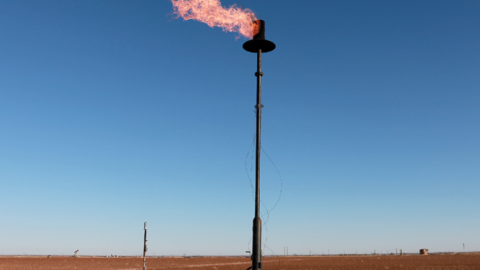Vladimir Putin has opened an economic front in his war against Ukraine — intentionally cutting oil and gas supplies to European countries.
Parts of Europe may be without heat or power as Russia’s weaponization of energy has sent prices soaring to more than 10 times the average. The risk of citizens freezing to death is a distinct possibility. Putin is gambling that Russia can last longer under sanctions than Europe under winter. That by inflicting enough pain, support for Ukraine will crumble.
But how could this even occur, and what, if anything, can America do to help?
Europe finds itself in an energy crisis mainly of its own making. Lulled into inaction by the promise of green energy coupled with an endless supply of cheap Russian oil and gas, it dismissed decades of energy-security warnings as outdated. In hindsight, the forced retirement of fossil-fuel facilities was a mistake for which millions are now paying the price. This is not a debate on renewables versus fossil fuels, as both are needed. It is, however, an indictment of how well-intentioned enthusiasm exceeds rational thinking. In Europe, government policy distorted market principles by favoring nascent technologies before the baton was ready to be passed.
The long-term solution for both Europe — and America — is clear: Energy policies must guard against potential disruption from geopolitical risk.
The future favors an energy transition, but unilateral actions and arbitrary deadlines meant to push or pull energy policy are counterproductive, and those espousing “If you build it, they will come” must be able to recognize and appreciate the difference between technological feasibility and unmitigated exuberance.
Recent national policy missteps have seen the United States backsliding from near energy independence, as directly reflected by rising energy costs here at home. America cannot afford to continue constraining traditional domestic oil and gas production without sacrificing energy security.
A responsible energy policy recognizes this inconvenient reality and works to ensure a healthy mix of fossil fuels and renewables complement each other. Build solar power and wind turbines, but frack as well.
That portfolio will change over time, with renewables taking on a larger share. Still, the process cannot be altered lest America suffer the same fate as Europe
The short term for Europe is less optimistic. New production within Europe requires years of thoughtful planning and construction. Several traditional power plants currently scheduled to be decommissioned at the end of the year can and will likely be kept running.
America can also help by increasing domestic energy production, freeing supplies and directly shipping gas to liquefied-natural-gas import terminals.
Unfortunately, European energy infrastructure is far from connected. Due to inadequate pipeline and energy infrastructure, American energy arriving at European ports cannot easily be transported throughout Europe. There are a few exceptions, including Lithuania, which developed its own LNG terminal and can accept US natural gas.
Luckily for the rest of Europe, market forces are already at work, pushing more energy to the continent where energy commands higher sale prices. This naturally occurring market realignment will not completely solve Europe’s supply deficit, but it will help. Regrettably, we can expect higher prices at home because European demand pinches supply.
Meanwhile, we should be looking for ways to unleash the full potential of domestic energy production here at home without delay. Absent that, we should all be hoping for above-average temperatures this winter.















